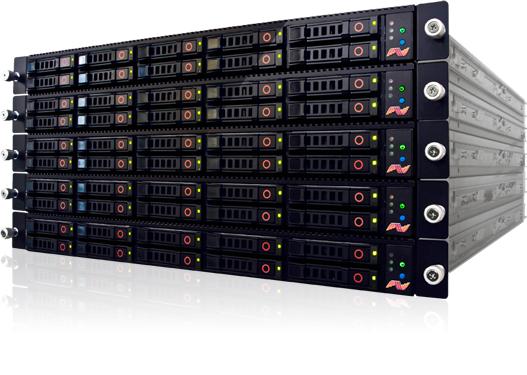Be Careful Of Selecting Your Storage: Where the Vendors “Hush”
The amount of data generated by the homo sapiens is growing exponentially and so is the appetite to store them. And this appetite is the playing ground of the storage vendors. The marketing and sales departments of the vendors know this very well and they really act accordingly. That means, they know when to talk and when to hush. Here are the tricks you need to know.
Storage products are considered with a three to five year usage span. After that period, the electricity and the maintenance costs come on par with the new storage acquisition cost. During this time frame you are betting some or all of your valuable data on the storage you are purchasing. The top three decision points are: quality, upgrades and scalability.
Quality is a very generic term. It is obvious that your IT budget is tight and most probably you may not get the best storage in the market. However there should be some quality points which you should not forsake. First, be extremely careful of a storage that uses consumer grade hardware no matter what the vendor tells you. The differences between the consumer and the enterprise grade components are huge, such as the quality of the components and the tests carried out. One of the net results of the differences is the annual failing rate. And guess which one has higher failing rates. The low cost of acquisition may be appealing but the operational costs and the risks may easily exceed the savings that you are making with the purchase.
RELATED: DNA Storage: Life as Knowledge
Next comes the upgrades. Think very carefully of what the storage vendor is offering in upgrades. Are they costly? Do they require too much downtime? Are they complex? Does the storage support background migration? What about firmware updates? These are the questions that you will face after purchasing the storage. Don’t even think about not making firmware updates, you will not be able to receive support and you will be asked to update before going on with the support case. And what if the storage vendor requires firmware updates to be carried out with its partner? Of course, don’t forget to ask about the live migration options.
Ask your vendor about the scale-out and scale-up possibilities: Your business requirements may ask you to add another storage to your infrastructure or grow on your existing infrastructure. To what point will you be able to expand your storage – how many enclosures, how many disks? Similarly, you may want to introduce another storage to ensure high availability at the hardware side. Or maybe you want to create one large storage pool by adding all of your existing storages. Ask if the storage supports these scenarios, and under which circumstances.
RELATED: How Secure Is the Cloud? Will It Rain Personal Information Everywhere?
In today’s private clouds and highly-virtualized data centers, I have seen many companies having difficulties in managing their fabric. Often this is neither the companies nor the software vendor’s fault. I have seen one successful implementation of System Center Virtual Machine Manager (VMM), together with Operations and Configurations Manager applications. The company wanted to introduce its brand-new acquired storages to the VMM. The two products were listed as compatible storage arrays in VMM’s. The company asked for support from the vendors, resulting in failure. Neither the vendors, the partners nor the consultants knew about this support, let alone how to implement it. When you are selecting your storage, ask if it is compatible with the infrastructure management application you are using – VMM, OpenStack, whatever it is.
Vendors will tell you that the flash storage is on the rise and it is the future of storage and you have to invest today. This is partially true. Flash is the future of storage for many devices but today in the enterprise it is not suitable for all the jobs. Consider jobs which require large sequential data operations – such as multimedia files – where traditional disks excel. You also have to consider your overall storage infrastructure and if it can support the throughput of the flash disks. Does your backplane, your controllers, your software support the speeds? If not you will have bottlenecks. And if you are unlucky, you may have buffering issues. Today, the correct solution is tiered storages, where you have flash disks and traditional spinning disks.
RELATED: Virtualization Traps Companies Should Not Fall
Storages are also affected from the software defined networking: the industry is shifting to software defined storages (SDS). With SDS, many of the functionalities that came with the storage itself is shifted to the hypervisors, operating systems and applications. Now the vendors are trying to lock the customers to proprietary solutions that only work in one platform; this is exactly taking the customer’s freedom and locking him to certain features. I advise you to be careful with this trap: go with open standards to keep your bargaining power and to focus on performance and reliability.
Unfortunately today, enterprise storage market is shaped by the trends. Vendors try to take advantage of these trends with their matching products. On the other side, the enterprises need security and reliability. Sadly, vendors’ salespeople are trying to match their goals and they are using the trends and the flashy “success stories” to achieve their targets. Enterprises need salespeople who are straightforward and “fuss-free” to assist them in selecting the most suitable platform. Again unfortunately, this type of salespeople are one of the endangered species in business.




